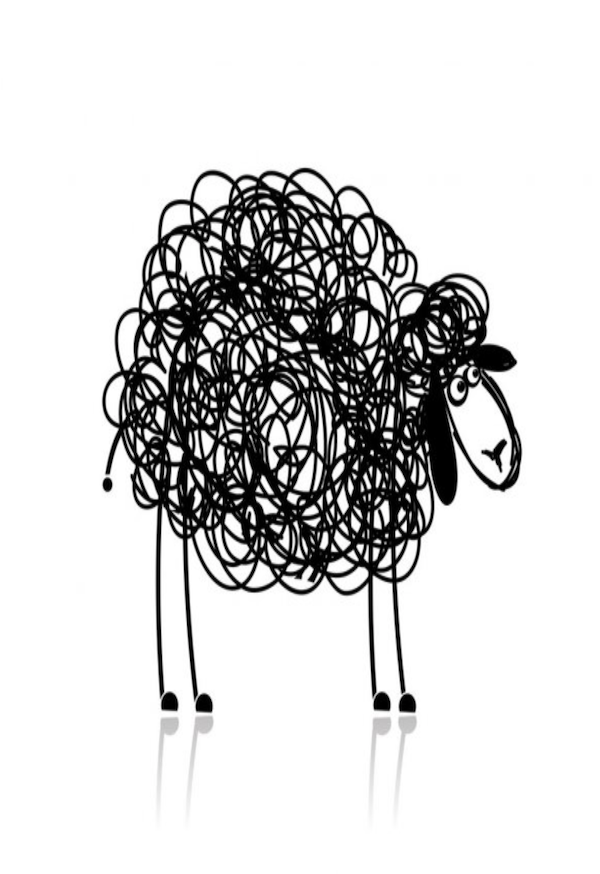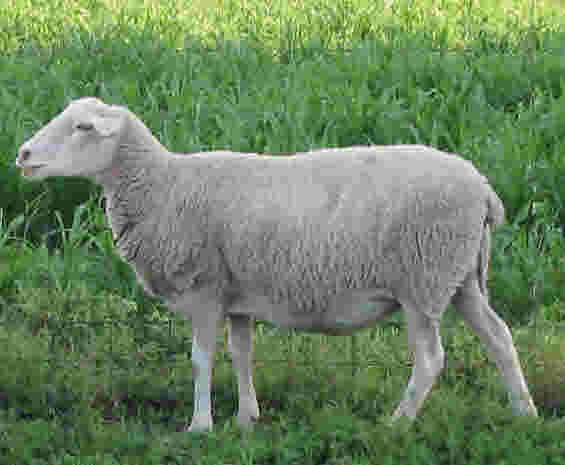
Several breeds mention the ewe neck as being incorrect or a major fault, and it’s not a surprise that they are sporting or hound breeds that hold prey, or retrieve and carry game birds (and we count the Poodle as a retriever).
The term, ewe neck, gets its name from sheep:

Wait, wrong picture. Do over:

In a ewe (a lady sheep), there is a thin under-muscled neck that in horses is sometimes called a “pencil neck” or an “upside down neck.” Such a neck in dogs indicates weaker neck ligaments that provide less support for the shoulder blades and front leg muscles. With less muscle power, there is strain on the back which results in a dip. A weak neck interferes with the ability to hold prey or a gamebird, and needless to say, is undesired in a dog that does either. Conversely, a dog with an arched neck is stronger at the base than at the under-part of a dog’s throat, or throatlatch. Thus, its neck ligaments – which support, raise, and lower the head and neck – are stronger and provide more power for the shoulder blades and front leg muscles. Those ligaments also anchor the muscles involved in moving the front leg back and forth. The neck ligament has better attachment in an arched neck than in a ewe neck, and this is why a ewe neck is considered a fault.
We wrote about this a few years ago, but like to update our posts every so often. That said, this is a simplistic overview of a subject people spend years learning about in school or as students of their breed.
Our image comes from artstation and Steve Lord
